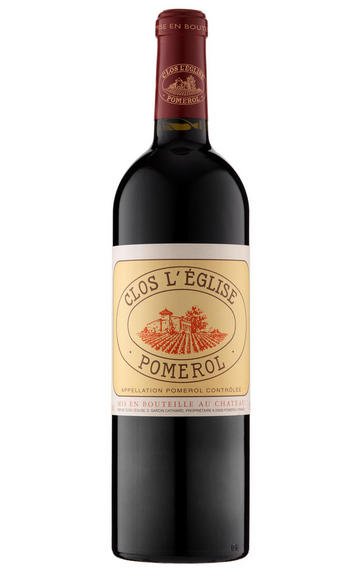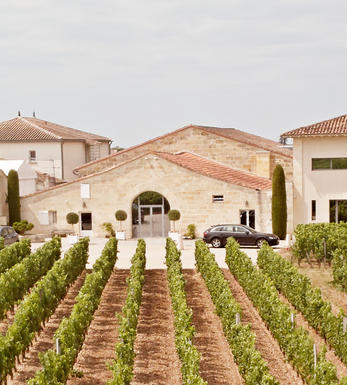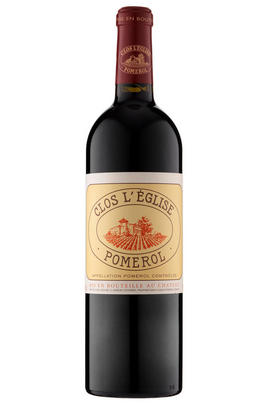
Critics reviews
Neal Martin - 30/05/2016
About this WINE

Chateau Clos l'Eglise
Pomerol - owned by S.Garcan-Cathiard, this 6 ha property produces on average 2,800 cases per year. Located in the centre-east of the Pomerol appellation, next to Ch.Clinet, the property shares a similar climate to that enjoyed by both St.Emilion & Pomerol: more continental than the maritime Médoc with generally more spring rainfall, though less in summer & winter. Its vineyards (Merlot 57%; Cabernet Franc 36%; Cabernet Sauvignon 7%) lie on sandy-gravel topsoils, underpinned by a hard-pan clay subsoil. Fermentation in wooden vats before 24 months of maturation in new oak barrels.

Pomerol
Pomerol is the smallest of Bordeaux's major appellations, with about 150 producers and approximately 740 hectares of vineyards. It is home to many bijou domaines, many of which produce little more than 1,000 cases per annum.
Both the topography and architecture of the region is unremarkable, but the style of the wines is most individual. The finest vineyards are planted on a seam of rich clay which extends across the gently-elevated plateau of Pomerol, which runs from the north-eastern boundary of St Emilion. On the sides of the plateau, the soil becomes sandier and the wines lighter.
There is one satellite region to the immediate north, Lalande-de-Pomerol whose wines are stylistically very similar, if sometimes lacking the finesse of its neighbour. There has never been a classification of Pomerol wines.
Recommended Châteaux : Ch. Pétrus, Vieux Ch. Certan, Le Pin, Ch. L’Eglise-Clinet, Ch. La Conseillante, Ch. L’Evangile, Ch. Lafleur, Trotanoy, Ch. Nenin, Ch. Beauregard, Ch. Feytit-Clinet, Le Gay.

Cabernet Sauvignon Blend
Cabernet Sauvignon lends itself particularly well in blends with Merlot. This is actually the archetypal Bordeaux blend, though in different proportions in the sub-regions and sometimes topped up with Cabernet Franc, Malbec, and Petit Verdot.
In the Médoc and Graves the percentage of Cabernet Sauvignon in the blend can range from 95% (Mouton-Rothschild) to as low as 40%. It is particularly suited to the dry, warm, free- draining, gravel-rich soils and is responsible for the redolent cassis characteristics as well as the depth of colour, tannic structure and pronounced acidity of Médoc wines. However 100% Cabernet Sauvignon wines can be slightly hollow-tasting in the middle palate and Merlot with its generous, fleshy fruit flavours acts as a perfect foil by filling in this cavity.
In St-Emilion and Pomerol, the blends are Merlot dominated as Cabernet Sauvignon can struggle to ripen there - when it is included, it adds structure and body to the wine. Sassicaia is the most famous Bordeaux blend in Italy and has spawned many imitations, whereby the blend is now firmly established in the New World and particularly in California and Australia.



Buying options
Add to wishlist
Description
Tasted at Bordeaux Index's annual 10-Year On tasting in London and then at the chteau, the 2006 Clos l'Eglise has an attractive, quite opulent bouquet with blueberry and crme de cassis aromas tinged with black truffle and violets. The palate is medium-bodied with supple ripe tannin, good acidity, grippy in the mouth and substantial weight on the finish. If it can evolve more finesse on the finish, this will be a very satisfying Pomerol, so afford it another 3-4 years in bottle. Tasted March 2016.
Neal Martin - 30/05/2016
wine at a glance
Delivery and quality guarantee